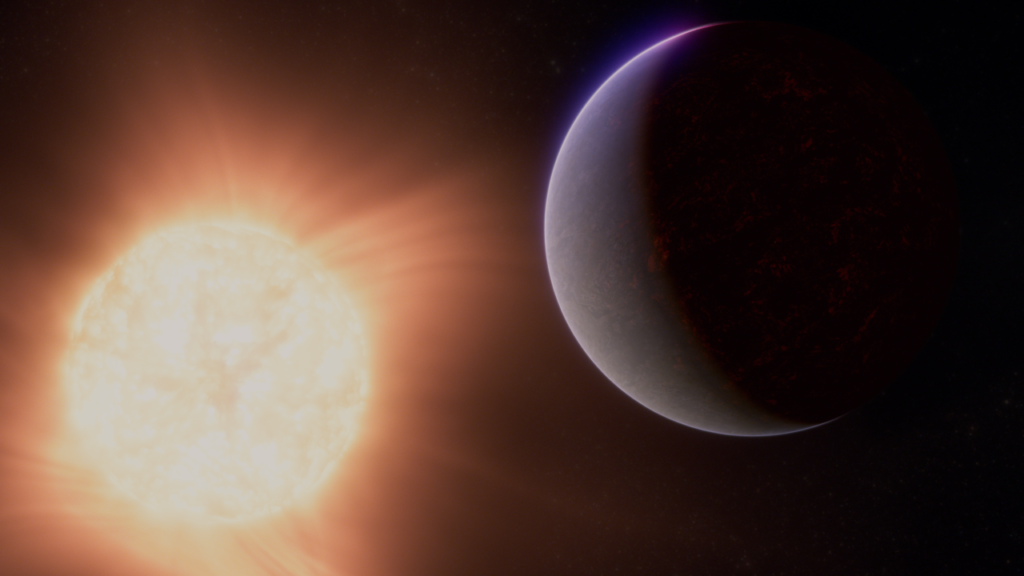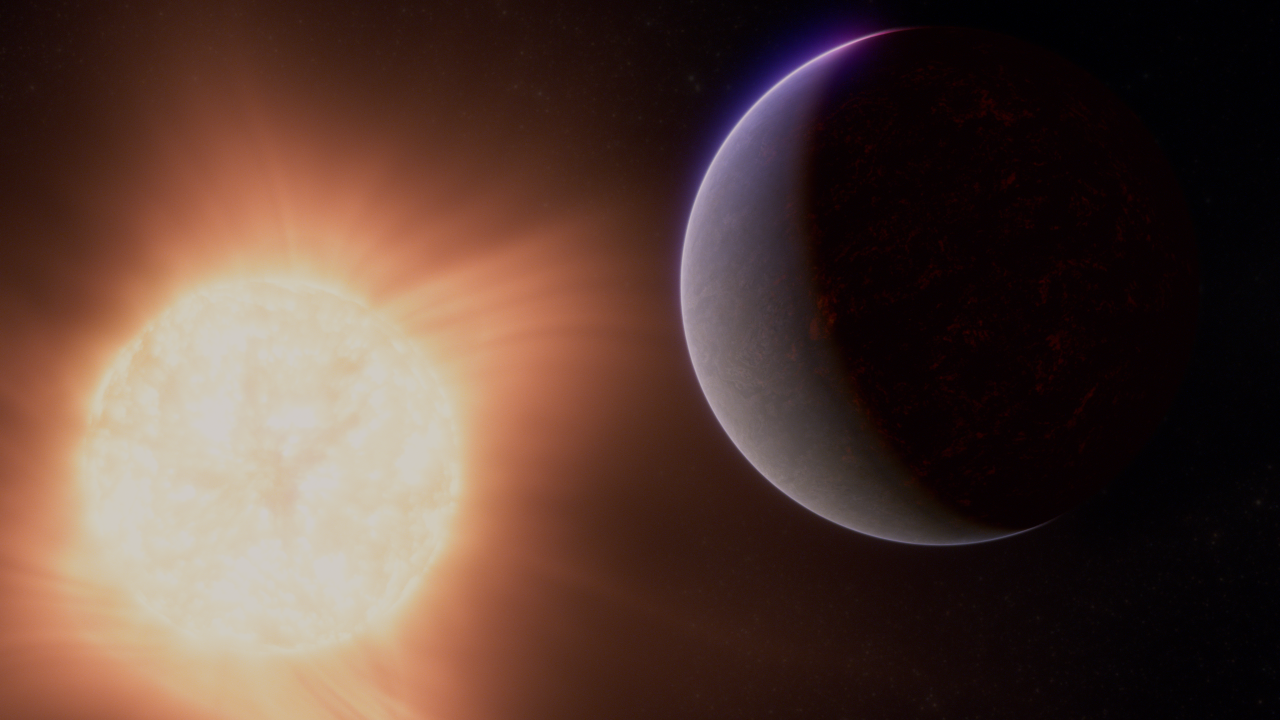NASA Webb Telescope, Exoplanet atmosphere, Rocky exoplanet, Space exploration
“Explore the latest discovery by NASA’s James Webb Space Telescope, which hints at a possible atmosphere surrounding a rocky exoplanet. This breakthrough could significantly impact our search for life beyond Earth, offering new insights into the conditions of distant worlds. Read on to discover how this finding enhances our understanding of planetary systems and the potential for habitable environments in space.”

Introduction
In a groundbreaking revelation by NASA, the James Webb Space Telescope (Webb) has provided promising data suggesting the presence of an atmosphere around a rocky exoplanet. This discovery could have profound implications for the study of planetary systems beyond our solar system and the ongoing search for life on other planets.
The Discovery by James Webb Space Telescope
The James Webb Space Telescope, a marvel of modern astronomy, has been designed to look deeper into the cosmos than ever before. Its advanced technology enables it to capture detailed information about distant worlds. Recently, Webb turned its focus to a particular rocky exoplanet, whose characteristics are now captivating the scientific community.
Characteristics of the Exoplanet
The exoplanet in question orbits a star outside our solar system and is classified as a rocky body, similar in many ways to Earth but located in another solar system. Unlike the gas giants such as Jupiter and Saturn in our own system, rocky planets like this one are prime candidates for the study of life beyond Earth due to their solid surfaces and potential to host water.
Evidence of an Atmosphere
The data obtained by Webb suggests the presence of an atmosphere based on the absorption and scattering of light from the planet’s star. When a planet has an atmosphere, light from its star can be absorbed or scattered by the molecules and atoms in the atmosphere, leaving distinct signatures that can be detected by telescopes like Webb.
Significance of Atmospheric Detection
An atmosphere is critical for the potential habitability of a planet as it can regulate temperature, protect the surface from harmful radiation, and potentially harbor signs of life. The discovery of an atmosphere around a rocky exoplanet thus raises the exciting possibility that this distant world could have the right conditions for life to develop.
Webb’s Instruments and Their Role
Webb is equipped with a suite of sophisticated instruments, including near-infrared cameras and spectrometers that are essential for studying distant planets. These instruments allow astronomers to determine the chemical composition of planetary atmospheres by analyzing the wavelengths of light they emit or absorb. The detection of chemicals such as water vapor, carbon dioxide, and methane could be indicative of biological processes.
Challenges and Limitations
While the hint of an atmosphere is compelling, scientists face significant challenges in confirming its presence and understanding its composition. The vast distances and faint signals mean that only the most sensitive instruments, like those on Webb, can detect these subtle clues. Moreover, differentiating between geological and biological sources of atmospheric compounds is another challenge that lies ahead.
Future Research and Exploration
The potential discovery by Webb marks the beginning of a new era in exoplanet research. Future missions and studies will aim to gather more detailed data on this and other similar exoplanets. Scientists hope to use Webb’s observations as a basis for more targeted research, including direct imaging of exoplanets and more precise measurements of their atmospheric components.
Impact on Astrobiology and Planetary Science
The implications of finding an atmosphere around a rocky exoplanet are vast. It could reshape our understanding of the diversity of planetary systems and the conditions that could support life. This discovery opens new avenues in astrobiology, as researchers consider the potential for life in environments previously thought to be barren.
Conclusion
NASA’s Webb Telescope continues to push the boundaries of space exploration and science, hinting at new mysteries to solve and wonders to uncover. The possible detection of an atmosphere around a rocky exoplanet not only highlights the capabilities of Webb but also ignites the imaginations of scientists and enthusiasts worldwide. As we stand on the brink of these potential discoveries, the universe seems ever more vast and promising. Each revelation brings us one step closer to answering the age-old question: are we alone in the universe?
This exciting development invites us to keep our eyes on the stars, eagerly anticipating the next chapter in the story of our universe as unveiled by the incredible technology aboard the James Webb Space Telescope.
Read More-
- New NASA Black Hole Visualization Takes Viewers Beyond the Brink
- Groundbreaking NASA Study Reveals New Insights into Global River Systems
- NASA Fermi Reveals the Universe in New E-Book
- Curious Asteroid Selam, Spotted by NASA Lucy Spacecraft, Is a Cosmic Toddler










